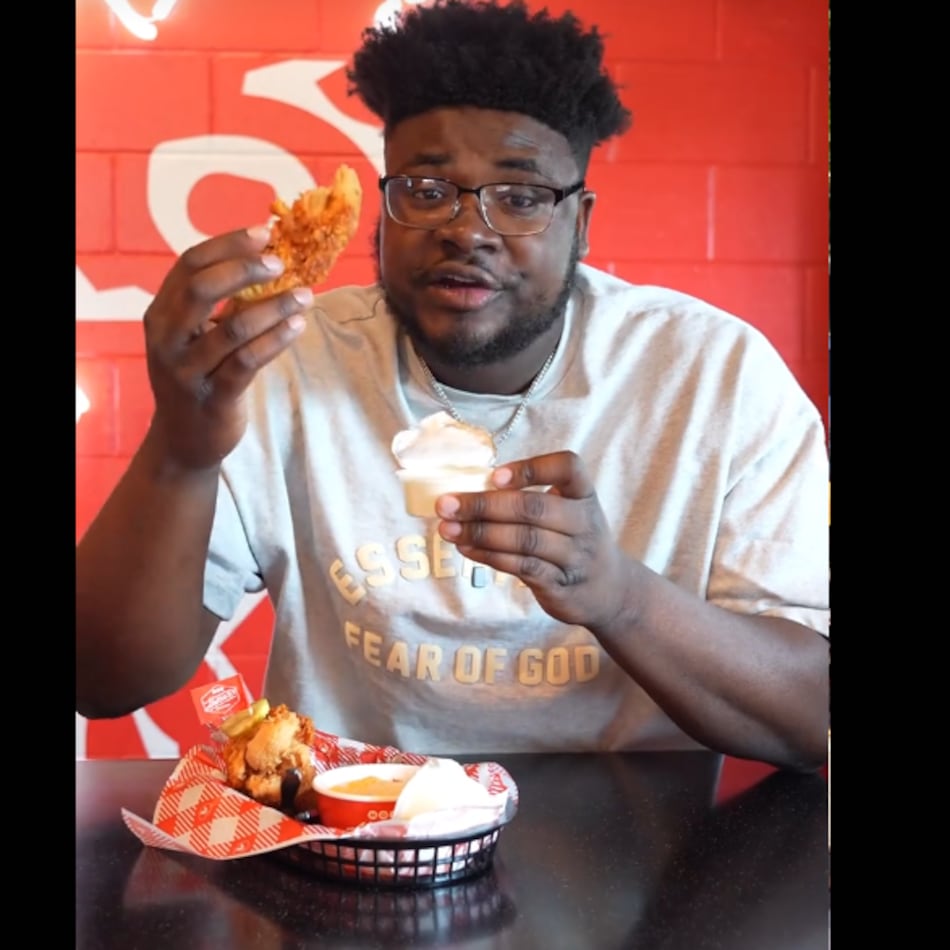Friday night in Symphony Hall, the Atlanta Symphony Orchestra offered storytelling tone poems in a mixed-media format, where visuals complemented the musical narrative. These performances, of César Franck’s “The Accursed Huntsman” and Arnold Schoenberg’s “Transfigured Night,” were a revelation — as engaging and musically complete as anything music director Nathalie Stutzmann has yet offered.
This year is Franck’s bicentennial. Born in what’s now Belgium, his legacy has probably grown in recent decades, especially with church organists and in the Francophone world, and a great many musicians haven’t forgotten the anniversary. (On the same night the ASO played this symphonic Franck, at a church across town, an organist was surveying the composer’s complete works for pipe organ.)
“The Accursed Huntsman,” which premiered in 1883, is a piece of moment-by-moment program music. The supertitles projected on the stage’s back wall gave us updates for each scene: the ghoulish tale begins with plans for a Sunday morning hunt (easily identified by the horns calls). But it’s Sunday! Everyone should be in church (equally identified by the tolling bells). Our huntsman is drawn to sacrilege, not piety, and into the forest he rides. Soon demons give chase. The hunter becomes the hunted.
Once you know the literal plot, the music makes this overheated little drama obvious. But giving a few pointers at key moments is the trick; the audience’s attention was riveted, with full attention to the music.
Meanwhile, Stutzmann and crew delivered magnificently. The four horns, often as a solo quartet, were a force of power and horror. First cocky and assured as they galloped away, they eventually joined the full orchestra in a screaming frenzy. You could almost see the horse frothing at the mouth, flames flickering all around. The strings were at their warmest, the woodwinds at turns verdant and menacing. The whole 15-minute piece was thoroughly lucid and tightly controlled. This is the level of performance you want to hear from your music director.
To close the show, after intermission, the big screen was hung behind the orchestra as we watched a silent black-and-white film to accompany “Transfigured Night.” British filmmaker Neita Jones’ projections, in atmospherics and with a pair of actors, mostly in silhouette, amplified the wordless story, based on a poem by Richard Dehmel: while walking in the woods on a cold, bracing night, a woman confesses to her lover that she’s pregnant after casual sex with a stranger. The D minor anxiety of this fraught moment is resolved with rosier D Major as the man replies that their love will make the child his own.
Jones’ film included Dehmel’s poem, the words (in German and English) projected to coincide with the dramatic shifts in the music. A few live-action shots were similarly effective. As we watched concertmaster David Coucheron dig deep into his violin, we saw the same scene, in ghostly form, up on the screen. It all worked, heightening the emotions of Schoenberg’s intoxicating music, blurring the present with the eternal, night with day, feeling with logic. (My one disappointment came near the end, when we unnecessarily saw the couple’s attractive faces, which drained a bit of the universality from the concept.)
We don’t hear a lot of Schoenberg’s music in these parts. When we do, it often leaves a tremendous impression, and Stutzmann’s reading had it all. Scored for large string sections — no winds, no percussion — the music revels in the composer’s twin obsessions, with earthy, autumnal Brahms and free-floating, chromatic Wagner. The ASO pushed and pulled at the musical expressiveness, with wonderfully hallucinatory intensity. The 30 minutes passed as if in a dream. This, too, is what we demand from our music director.
So it’s curious that Stutzmann’s ASO tenure is off to such an uneven start.
Her program opened with Brahms’ Third Symphony which, under Stutzmann’s baton Friday evening, sounded as under-rehearsed and haphazardly interpreted as the Beethoven’s Ninth Symphony on Thursday last week.
The opening movements of the Brahms refused to gel, even with notable individual contributions, especially from the woodwinds. A bit of ragged playing isn’t a big deal if the interpretation is persuasive. But there was a lack of unity on stage, with some awkward transitions and a slight, looming sense of uncertainty. Perhaps everyone is still getting accustomed to each other, albeit in this core repertoire.
The symphony’s third movement, in amber hues and touched with melancholy, is as emotionally opaque yet stirring as anything the composer wrote. Here it lacked the gravitas we usually hear, in part because it felt so episodic. Sitting in the principal horn chair as a substitute was Ryan Little, who holds the first chair with the Naples Philharmonic in Florida. In the prominent horn solo, Little proved an excellent player, his phrasing smooth and flowing, a long legato arc of melody — but at odds with where Stutzmann appeared to be going.
The orchestra’s cohesion and energy came together better in the finale, in parts, although there was still a lack of clarity in the vision. But no one should be surprised if the overall playing of the Brahms improved in subsequent performances over the same weekend. Does that tell us the opening-night concert was, in effect, treated as a dress rehearsal?
Surprisingly, there was a smattering of applause after each movement, in violation of (sometimes senseless) concert hall etiquette. This suggests the show wasn’t selling as well as hoped, so the auditorium was “papered” with free tickets — not necessarily a bad thing. Many of these classical-music neophytes will likely enjoy the show; a few of them will return on their own.
Pierre Ruhe was the founding executive director and editor of ArtsATL. He’s been a critic and cultural reporter for the Washington Post, London’s Financial Times and the Atlanta Journal-Constitution, and was director of artistic planning for the Alabama Symphony Orchestra. He is publications director of Early Music America.
Credit: ArtsATL
Credit: ArtsATL
MEET OUR PARTNER
ArtsATL (www.artsatl.org), is a nonprofit organization that plays a critical role in educating and informing audiences about metro Atlanta’s arts and culture. Founded in 2009, ArtsATL’s goal is to help build a sustainable arts community contributing to the economic and cultural health of the city.
If you have any questions about this partnership or others, please contact Senior Manager of Partnerships Nicole Williams at nicole.williams@ajc.com.
About the Author
The Latest
Featured



